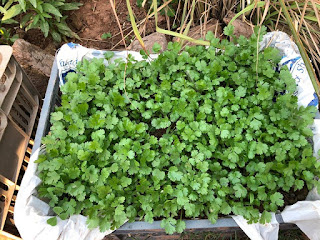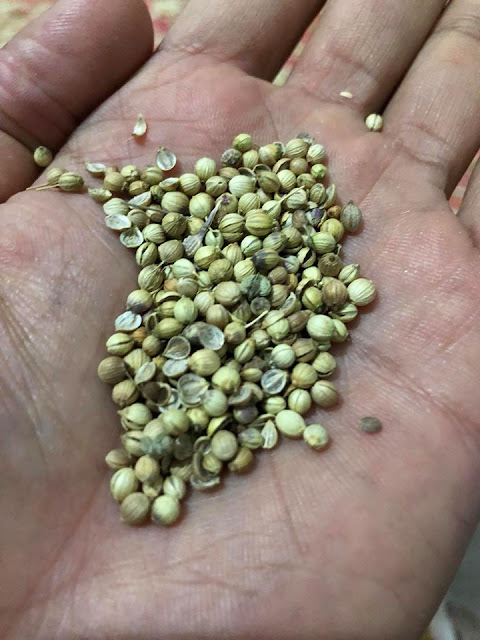How To Grow
Coriander – دھنیا
آپ کی کچن میں سوکھا دھنیہ ہر وقت موجود ہوتا ہے ۔ ثابت دھنیا لیں ہاتھ پر مسل کر انس کو دو حصوں میں تقسیم کر دیں اور پھر کیاری میں گملے میں یا کریٹ میں جہاں آپ نے لگانا ہے۔ مٹی اچھی ہو جس میں پتوں کی کھاد یا گوبر کی پرانی کھاد جو موجود ہو آپ کے پاس اچھی طرح مکس کریں۔
اور دھنیہ کو اُس میں لگا کر پانی دے دیں۔۔۔۔
Coriander enjoys a sunny position but appreciates a little shade during the hottest part of the day. Plants will run to seed more quickly if stressed by hot weather so this is important for leaf varieties.
Sowing Coriander
Coriander is sown from late March until early September. To achieve a constant supply of leaves through the Summer sow small amounts every 3 weeks. The best months for leaf production are late spring and Autumn. Coriander is will grow best sown directly rather than grown in seed trays and transplanting. This is because transplanting disturbance will also cause then to run to seed.
Sow directly into well drained, fertile soil. If your soil needs to be improved add good garden compost or well rotted manure. Rake into the surface of the soil to remove any large lumps or stones leaving a fine and even tilth. Seeds are best sown in groups of 5 spaced 20cm between rows and 20cm between plants.
You can also grow coriander successfully in pots or trays filled with a good multipurpose compost. Coriander plants have deep tap roots so pots need to be at least 25cm deep. Scatter seeds on the surface of the compost and cover, watering well. In a pot of 25cm diameter you can sow approx 5 seeds per pot.
Caring for Coriander
Germination of coriander takes up to 3 weeks. Thin young plants to 20cm apart to allow them to grow to their full size. Water them in dry periods and ensure the soil never dries out. If flowers develop remove them immediately – this ensures the plants focus their energy on growing new leaves. Re-sow coriander every three weeks to ensure you have a continual supply during the summer. It is not normally necessary to feed coriander if the soil is well nourished. However is the plants appear to be suffering give them a liquid organic feed to perk them up.
Harvest the leaves when the plant is big and robust enough to cope. Pluck or cut each leaf off the stem or snip whole stems if necessary. Both the leaves and the stalks can be used.
If you are growing coriander for its seeds, wait until the flowers have died off before harvesting. Cut the stems and place the heads of the coriander in a paper bag, with the stems slicking out. Tie the stems and the bag together in a bunch and hang upside down in a cool, dry place. Wait for three weeks and then shake the bag. The dry seeds will fall out from the flowers and be ready in the bottom of the bag. Keep them in a dry place and re-sow the following spring


